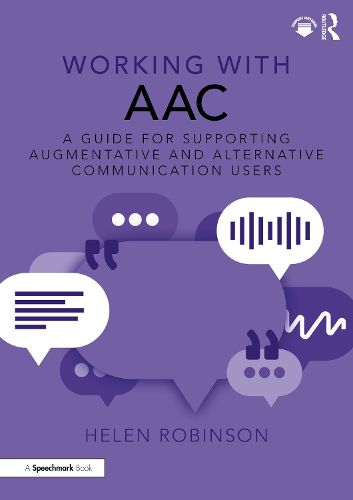Readings Newsletter
Become a Readings Member to make your shopping experience even easier.
Sign in or sign up for free!
You’re not far away from qualifying for FREE standard shipping within Australia
You’ve qualified for FREE standard shipping within Australia
The cart is loading…






This book demystifies the world of Alternative and Augmentative Communication (AAC) in speech and language therapy, explaining key terminology and guiding clinicians through the research underpinning successful clinical practice. Spanning a range of clinical groups and all ages, it introduces a holistic framework to support clinicians along the journey from assessment to implementation. Key features include:
Current research and evidence-based practice broken down into accessible chunks. Clear, easy to read explanations of the components of AAC systems and their importance. An insight into the challenges faced when supporting AAC users and solutions to overcome these. The voices of aided communicators woven throughout, re-telling their experiences and how clinicians can best support them to use AAC. Photocopiable clinical resources, including assessment checklists and advice sheets for families and people who use AAC.
Rooted in lived experience, this book suggests practical solutions for supporting a person to have a positive experience of being an aided communicator. It is an invaluable resource for experienced clinicians, speech and language therapists and allied professionals, as well as those new to the world of AAC both now and in years to come.
$9.00 standard shipping within Australia
FREE standard shipping within Australia for orders over $100.00
Express & International shipping calculated at checkout
This book demystifies the world of Alternative and Augmentative Communication (AAC) in speech and language therapy, explaining key terminology and guiding clinicians through the research underpinning successful clinical practice. Spanning a range of clinical groups and all ages, it introduces a holistic framework to support clinicians along the journey from assessment to implementation. Key features include:
Current research and evidence-based practice broken down into accessible chunks. Clear, easy to read explanations of the components of AAC systems and their importance. An insight into the challenges faced when supporting AAC users and solutions to overcome these. The voices of aided communicators woven throughout, re-telling their experiences and how clinicians can best support them to use AAC. Photocopiable clinical resources, including assessment checklists and advice sheets for families and people who use AAC.
Rooted in lived experience, this book suggests practical solutions for supporting a person to have a positive experience of being an aided communicator. It is an invaluable resource for experienced clinicians, speech and language therapists and allied professionals, as well as those new to the world of AAC both now and in years to come.